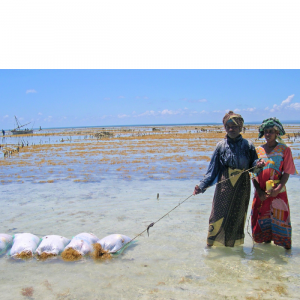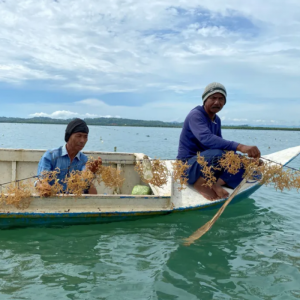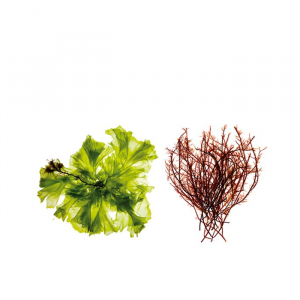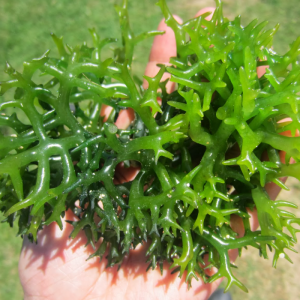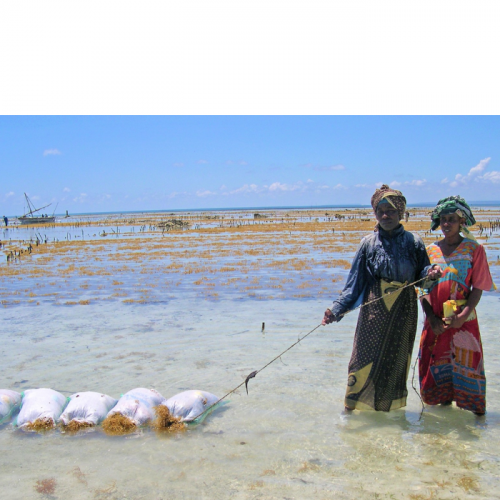
Physiological, Biochemical Responses of Red Alga to High Temperature
| Tue, 29 Sep 2020 - 13:53
Carrageenan is the third most important hydrocolloid (moisture-retentive, gel-forming agents) in the world – after starch and gelatin – and occurs as matrix material in the red alga Kappaphycus alvarezii. It is used in a variety of commercial applications as gelling, thickening and stabilizing agents, especially in the food, cosmetic and pharmaceutical industries.
K. alvarezii has been introduced to many countries for research, culture development and commercialization by several companies. Its commercial cultivation has been supplying the carrageenan industry over the past four decades as the biggest source of carrageenan, along with other algae such as Chondrus crispus, Hypnea musciformis and Eucheuma denticulatum.
It is mainly produced in the Philippines, Indonesia and Malaysia, with Indonesia being the leading producer (110,000 metric tons, or MT, dry weight), followed by the Philippines (60,000 MT dry weight). It is also cultured in Africa and the Americas, and all over its range it is an important means of livelihood and income for coastal communities.
Global warming has been an increasing concern and it poses a threat to K. alvarezii cultivation. Temperature rise due to global warming not only causes physical damage, but also affects the eco-physiological, reproductive and metabolic processes of this seaweed. In addition, K. alvarezii has become more prone to “ice-ice disease” (a term developed by farmers in the Philippines to describe the senescent tissue devoid of pigments that caused healthy branches to break off) due to abrupt changes in temperature of the seawater.
This article – adapted and summarized from the original publication – investigated the physiological (growth and photosynthesis) and biochemical (carrageenan yield and quality, pigments and other parameters) responses of K. alvarezii to elevated water temperature. The results are expected to provide valuable information for farm management practices and to develop strategies to mitigate the effect of global warming, which is imperative for the sustainability of cultivation of this alga and its downstream carrageenan processing industries in the tropics.
Also read: Improving Immune Performance in Aquaculture Through Algae
Study setup
Fresh and visually healthy samples – without showing signs of disease or other health issues – of K. alvarezii were obtained from a farm in Semporna, Sabah, Malaysia in April 2019. On site measurements of the seawater pH, salinity and temperature were recorded. The collected samples were transported back to the laboratory and maintained for acclimation in artificial seawater at 30 ppt salinity in a controlled environment incubator at 28 degrees-C, with continuous aeration and illuminated with white fluorescent lamps for up to seven days until the maximum quantum yield – a photosynthetic parameter – was stable.
The acclimated seaweeds were cultured under four different temperatures; 28 ± 1.0 (ambient), 32 ± 1.0, 36 ± 1.0 and 40 ± 1.0 degrees-C. Commercial data loggers were used to monitor the temperature fluctuations. The light intensity, photoperiod, pH and salinity for all temperature treatments were maintained the same as during the acclimation. Each temperature treatment was conducted with five replicates and the seaweeds incubated at 28 and 32 degrees-C were cultured for fourteen days. An initial biomass of 50 ± 10 grams was used for all replicates and temperature treatments. Treatments at 36 and 40 degrees-C ended after ten and two days, respectively when the seaweeds were partly or entirely bleached, shoots became fragile and fragmented.
Medium renewal of the artificial seawater was carried out every two to three days for nutrient replenishment and to overcome evaporation. The growth rate and photosynthetic response were measured every two days, whereas the pigment contents, carrageenan yield and quality were measured on day 0 and on the final day of the temperature treatment (day 14 for 28 and 32 degrees-C, day 10 for 36 degrees-C and day 2 for 40 degrees-C).
For detailed information on the source and acclimation of K. alvarezii; temperature experiments; determinations of specific growth rates and photosynthetic response; pigment content, carrageenan extraction and gel strength and viscosity; and statistical analyses, refer to the original publication.
Also read: Use Biofilter to Minimize Nitrogen Waste
Results and discussion
To the best of our knowledge, this study marks the first report on the effect of elevated temperature on the various physiological and biochemical aspects of K. alvarezii from Malaysia. Our results demonstrate that increasing temperature significantly affected the growth rate, photosynthetic performance, carrageenan yield and quality, pigment contents and production of reactive oxygen species (indicative of stress response).
In our trial, the growth rate of K. alvarezii decreased with increasing temperature above 28 degrees-C, and the highest growth rate (0.58 percent per day) was recorded at 28 degrees-C. The slowing decrease in specific growth rate, SGR (a measure of the number of divisions per cell per unit time) towards the end of the experiment at 28 and 32 degrees-C suggests that the seaweeds may slowly adapt to the environmental changes with time, although this hypothesis needs verification through long-term studies.
Some authors have reported that the highest growth rate of K. alvarezii in Vietnam was recorded at 25 to 28 degrees-C, whereas the seaweed became fragile with decreased daily growth rates at temperatures of more than 33 degrees-C. Other researchers in India observed a higher growth rate when the seawater temperature ranged from 26 to 28 degrees-C. It appears that cultured K. alvarezii performs best at 27 to 30 degrees-C in tropical and subtropical waters.
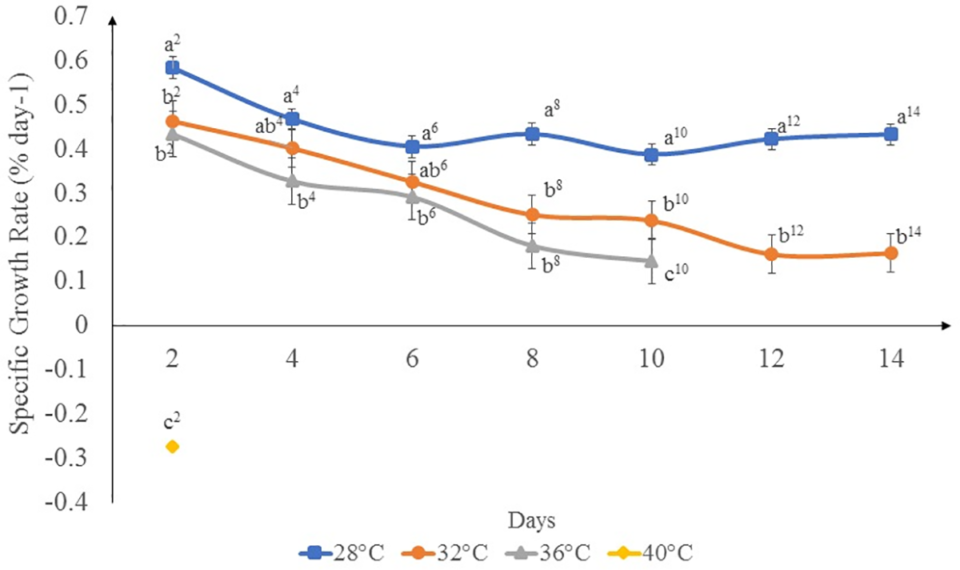
Fig. 1: Specific growth rate (percent per day) of K. alvarezii incubated at different temperatures. Data shown are mean values and standard deviations (n = 5). Different lowercase letters indicate significant differences (p<0.05) between different temperature treatments at each time point.
In general, the growth and photosynthetic rates of seaweeds increase with temperature until an optimum temperature is reached and then rapidly decline at temperatures above the optimum. Our results showed that the K. alvarezii strain used in this study can tolerate higher temperatures of up to 32 degrees-C fairly well in terms of growth, photosynthetic activity and other parameters, despite reduced pigment content and carrageenan yield and quality by the end of the experiment.
Also read: Is Fresh Algae or Powdered Algae Better for Shrimp Seed?
Although some seaweeds can adapt to a certain degree of heat stress, prolonged exposure to prolonged high temperature will lead to disruptive stress in the form of cellular and subcellular damage. These damages, together with reallocation of resources for protection and repair, may lead to slower growth rates. This may have been the case in our study, where the algae specimens could somewhat tolerate increasing temperatures up to 36 degrees-C, but only for ten days at the most before the shoots started to bleach and disintegrate. Even at 32 degrees-C, significant differences in growth were observed compared to the ambient temperature on day 2 (probably acute stress response to higher temperature) and from day 8 onward (suggesting that the seaweeds start to succumb to heat stress following a brief acclimation period from day 2 until day 6).
Shifts in environmental factors potentially cause stress in seaweeds, which are often demonstrated in changes to photosynthetic parameters Results from our study concurred with previous reports where photosynthetic parameters are temperature dependent, given that the highest reading was obtained at the optimum temperature (28 degrees-C) and was reduced at higher temperatures. Among the range of temperatures tested in this study, 28 degrees-C appears to be the most favorable temperature for photosynthetic activity of this strain of K. alvarezii. This effect of temperature is attributed to the influence of temperature on various processes including enzymatic reactions of carbon fixation and others.
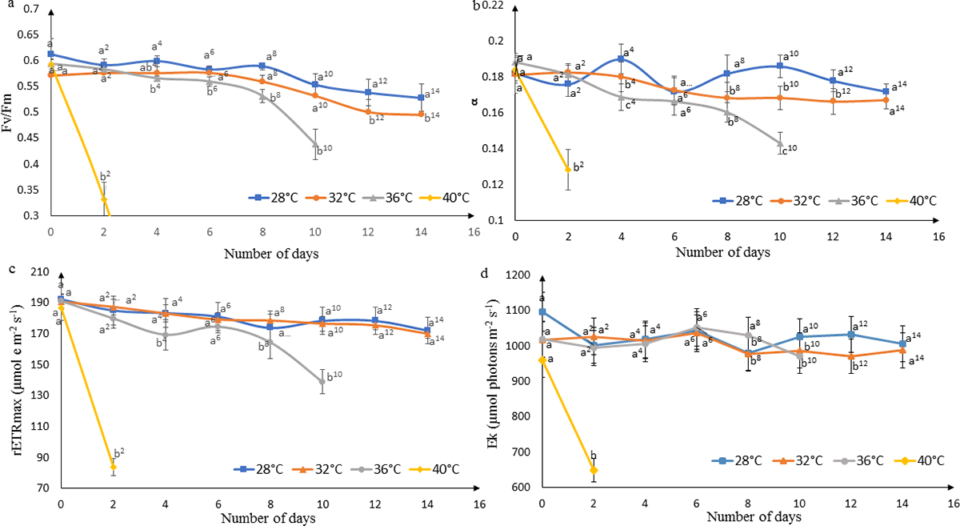
Fig. 2: Various photosynthetic parameters of K. alvarezii incubated at different temperatures. Data shown are mean values and standard deviations (n = 5). Different lowercase letters indicate significant differences between different temperature treatments at each time point.
The decline in photosynthesis at elevated temperatures can also be related to pigment damage. We observed a decrease in chlorophyll-a (a specific form of the plant pigment chlorophyll and involved in photosynthesis) content as temperature increased. This may be attributed to the interference in chlorophyll biosynthesis. Moreover, high temperature could lead to swelling and dilation of chloroplasts (plant organelles that carry out photosynthesis) and fracture of the chloroplast membrane. Impaired chlorophyll biosynthesis and chloroplast development causes reduction in photosynthesis and plant productivity. Therefore, external environmental factors such as temperature have adverse effects in these energy transfers and consequently reduce the pigment content.
Also read: Clean Energy in Aquaculture: Using Technology to Grow Healthy Fish
Temperature can affect the yield and quality of carrageenan, as observed in K. alvarezii. Our study showed that seaweeds incubated at 32, 36 and 40 degrees-C produced significantly lower carrageenan yield compared to seaweeds incubated at 28 degrees-C, which corroborate previous studies that reported that incubation of seaweeds beyond conducive temperature lowers their gel strength and gel viscosity. When seaweeds are exposed to elevated temperature, it causes the loss of the water molecules and subsequently decrease in viscosity and gel strength. This was supported by our observations, where the percentage inhibition of gel viscosity was higher for seaweeds incubated at 32 to 40 degrees-C compared to the ambient temperature.

Fig. 3: Percentage inhibition of a) carrageenan yield, b) gel strength and c) gel viscosity of K. alvarezii incubated at different temperatures. Data shown are mean values and standard deviations (n = 5). Different lowercase letters indicate significant differences (p<0.05) between different temperature treatments for each biological parameter.
Perspectives
Temperature is crucial for accelerated growth and increasing photosynthetic performance. Based on our results, K. alvarezii performs best at 28 degrees-C, with signs of stress observed at 32 and 36 degrees-C, and 100 percent mortality observed at 40 degrees-C within a very short period. However, our study indicated that temperatures of 32 degrees-C and above result in lower pigment content and, consequently, reduced photosynthetic efficiency, poor growth rates, lower yield and quality of carrageenan and finally ice-ice disease occurrence and loss of biomass due to fragmentation. Even small shifts in temperature can have adverse effects on the health of K. alvarezii and have an impact on the cultivation of this commercially important alga.
The effect of warming on K. alvarezii, in the long term remains unknown, but our study provides a basis for future work on long term acclimation to elevated temperatures. It can support future research to identify heat-tolerant strains for sustainable cultivation and assist with planning and management of the global seaweed aquaculture industry.
Source: Global Aquaculture Alliance













